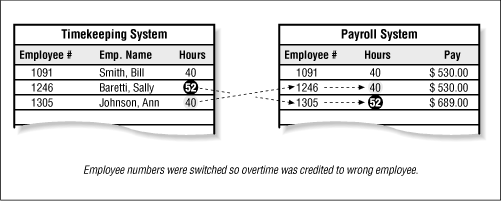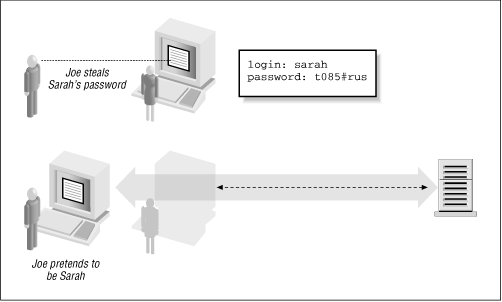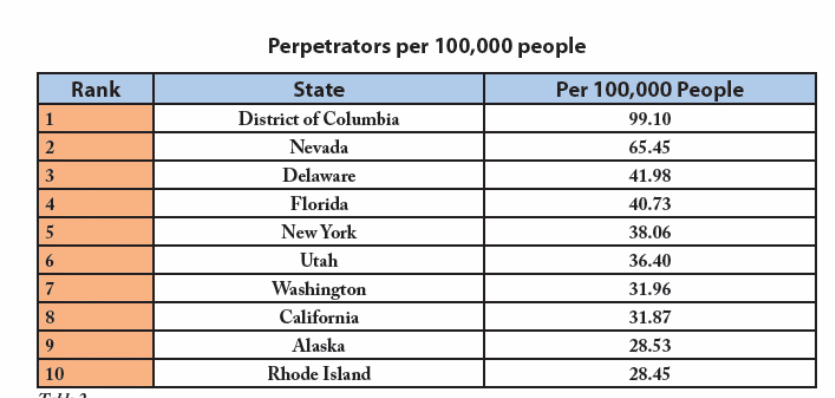In the modern world where advancement in technology was remarkable, especially in computers, the authority had an additional job in solving technology-based crimes. Technologies such as home computers, the Internet, websites, made it possible to have business transactions over the internet. This has been a new dimension that crimes are made possible. With just the use of computers, crimes are made possible. The world of computers changed the kinds of crimes that exist in the world today. It made crime easier to commit and more difficult to solve. It changed the ways of criminals in committing crimes.
One example is the property crime wherein criminals can actually commit from their very own homes. Their victims are not limited to the people around their neighborhood but are extended to people all over the world.
Computer crime is defined as computer use that would include committing crimes. It is performed to illegally access confidential programs or data. Computer crimes are also a high-end type of crime. They use highly technical methods that necessitate training on the part of the law enforcement group to investigate this kind of crime. This would need computer literate law enforcers, whose knowledge would not be limited to the basics of computers but to the very detailed processes of its programs and the processes of the World Wide Web in order to investigate deeply computer crimes. This is a very serious type of crime that is very costly and hard to solve.
What are then the features of computer crimes? How does a computer crime occur? What are the different kinds of computer crimes and how do criminals operate? What are the rates of these kinds of crimes? Why is it very hard to solve? How then does the Federal Bureau of Investigation go about solving these kinds of crimes? Let us then take a closer look at computer crimes.
Features of computer crimes can be stated as follows:
One feature is that computer crimes focus on two areas, one focus is on secret information storage systems such as database centers of the government, the military, and some technology-based centers while the other focus is on the financial systems.
Another feature of computer crime is that they are highly intelligent crimes. These are committed by computer experts or highly intelligent technicians. In a report, it has been found that in the 39 cases of computer crime related to the finance area in the Department of Finance of the US, 70.5% of the offenders are done by computer professionals (Jianyong, 1994). The offenders also use methods that are highly intelligent to commit the crime and they are always conceived and prepared.
Computer crimes usually result in damages that are severe. In the US alone, computer crimes account for $2-$8 million of loss (Hugo, 1987).
Computer crime is also hard to be detected and hard to be investigated. This is so because of two main reasons. One is that the execution of such crime is imperceptible and another reason is that the law enforcement practitioners lack the knowledge and skills in computer technology thus only 10% of the computer crimes are detectable and only 1 percent of this can be sued in the developed countries (Jianyong, 1994: p 21). In the United States alone, only 1 criminal in 22,000 criminals goes to prison because of difficulty in finding evidence enough to convict the criminals.
Different types of Computer Crimes and How They Operate
Computer Crimes can occur in four ways. The first is that the computer may be a target of a certain crime like data or programs would be stolen or would be damaged. Another way a computer crime can occur is that a computer may be a medium of a certain attack by creating a fraudulent environment meant to mislead or cheat someone by entering false data. It could also be possible that a computer would be used to plan a crime but computers are not part of the crime. The last way a computer crime may occur is through intimidating or deceiving a person with the use of computers such as a financial adviser may steal money by convincing a client of software that may help increase the client’s earnings (Ethics, Computer Crimes).
There are different types of computer crimes that could be committed and there are a lot of ways that a computer crime can be done. One computer crime is Data Diddling. This crime would include changing files say for example is a student changing the grades in a school file.

The sample shown in the illustration above is an example of data diddling; it switched the employee’s number so that the overtime would be credited to the different employee (Icove, et. al., 1995).
Another crime is the Trojan horse which consists of two parts, a client and a server. The server is the program that is run on the target computer and it takes commands from the Client computer used by the server. The attacker gets the IP Address of the computer where the server would be run. Once there would be a connection is established the server then starts to perform the tasks that the Client commands on the victim’s computer. How the Trojans work on a certain computer is classified into six main types basing on the way that they breach or they damage the system. These main types are remote access, data destruction, downloader, the server Trojan, the security software disabler, and the Denial-of-service attack. A trojan horse can cause the following damages, erasing or overwriting data on a computer, can also cause file encryption in cryptoviral extortion, corruption of files in a subtle way, upload and download files, can also copy fake links which could lead to fake websites that could show any local account name and falsely engage in an untrue context, can allow remote access on the computer of the victim through a process called remote access Trojan, spreading viruses through a type of Trojan horse called the ‘dropper’ or ‘vector’. Trojan horse is also capable of setting up networks with zombie computers to be able to send DDoS attacks or send spam mails; this could also be used to spy on the user of the computer and report data such as browsing habits to another party. Trojan horse is also capable of taking screenshots, logging keystrokes so the attacker can steal information such as passwords and credit card accounts. Trojan horse programs can also do phishing for bank accounts and other details that could be used for criminal acts. This program can also install a backdoor on a computer system, can open and close a CD-ROM tray, playing sounds or videos, or display images. This is also capable of calling an expensive number using the modem, can harvest e-mail addresses the attacker can use for spam, causing the computer to restart whenever an infected program is opened, deactivating the programs installed for virus detection, deactivating with other competing forms of malware, and causes random shutting off of the computer (Thompson, 1972).
Another computer crime is Salami Shaving wherein small amounts are taken from large amounts that could be accumulated in some other account. Say for example a bank employee may shave just a few cents from a client and the client may not notice this. The small amounts that this bank employee is shaving when accumulated may become large.
Another computer crime may be trapdoors wherein leaving an illicit program within a completed program that would allow an illegal program to access (Cullom, 2001).
Logic and Time Bombs is just like a real-time bomb that when triggered by a specific date or time, or the number of times of execution, causes drastic effects from changing a random byte of data from a certain to make the whole disk unreadable. This may not be detectable until the damage had already been done (Logic Bomb, 2006).
Another computer crime is Piggybacking wherein another person can use one’s identification code or uses one’s files before he logs off. Or this could be also done by using the internet connection of your neighbor without their knowledge. By bringing the laptop near your neighbor’s house to gain access, is piggybacking (Marriot, 2006).
Zapping is another computer crime wherein the person would use an illicitly acquired software package to bypass all security systems (Computer Crimes). Another computer crime is viruses and worms. The worm is a program wherein it transfers itself from one computer to another in a network and plants itself on a certain file on the target computer. Its uncontrollable multiplication of itself fills the computer’s memory. The virus on the other hand is an illicit program that passes itself to the programs that it comes in contact with. This is very contagious and causes considerable damage such as deleting or corrupting files and this could be transmitted through memory sticks.
Another form of computer crime is software piracy. This would include illegal copying of certain software that is copyrighted and selling it to other users.
Another form of computer crime is Masquerading wherein a person can use the identity of another person to gain access to a computer. This can be done personally or by remote control. Personally, a person may use the identity of an authorized user to get into areas where access to computers and data is possible (Icove et.al. 1995). The illustration below shows what masquerading is.

The Federal Bureau of Investigation (FBI) has a Cyber division that investigates cybercrimes. Their top priority when investigating these types of crimes is those that are related to the terrorist organizations or intelligence operations which are sponsored by other governments.
Crimes related to computers are of two categories; one is that it can be facilitated by a computer wherein a computer is used to perform a criminal activity which could include fraudulent record storage, false identification production, illegal distribution and reproduction of copyrighted material, pornography, or other related crimes. Second is that when there is a certain network or computer that is a target of the crime wherein hidden criminal information is possible which would need a very thorough and careful computer forensic investigation (How the FBI, 2004).
The FBI follows a certain guideline when investigating computer crimes.
They conduct investigations when there is a violation of the criminal code that is within the FBI’s jurisdiction and when the US Attorney’s Office allows the investigation and that they also agree to the prosecution of the subject if there is substantial evidence that proves a federal violation. The FBI can also gather information concerning the crime if there is a request for voluntary disclosure of the information if there is a court order if there is a federal grand jury subpoena and a search warrant (How the FBI, 2004).
The table below shows the Top ten IC3 complaint Categories. As of 2007, comprising 35.7% of computer crimes, Internet auction fraud ranked first followed by a non-delivery comprising 24.9% followed by the different types of fraud.

Perpetrators are mostly male and they are located in various states of the US. The table below shows the top ten states where perpetrators came from.

With these technologies, it was made possible to do crimes in a secret way causing great damages, not just in computers but to the lives of the people as well. People became more cautious when it comes to answering e-mails, giving out information over the internet because they are afraid to be victims of computer crimes.
Thus advancement in technology may be good, but it also increased the crimes that people do today. The advancement of technology also advanced the crimes that people do today. They do crimes secretly and successfully without being caught, but even if caught, chances are very small for them to be convicted because it is very hard to investigate computer crimes.
References
Cornwall, Hugo (1987). Datatheft: computer fraud, industrial espionage and information crime. London: Heinemann Professional Press.
Teng Jianyong (1994). Studies in Criminology. Beijing: China Procurate Press.
David Icove, Karl Seger & William VonStorch. (1995). Computer Crime A Crimefighter’s Handbook1st Edition August 1995. 2008. Web.
Thompson, Ken (1983). “Reflections on Trusting Trust“. 1983 Turing Award Lecture, ACM. 2008.
Logic Bomb. (2006). Web.
Marriott, Michel 2006. Hey Neighbor, Stop Piggybacking on My Wireless. The New York Times. 2008. Web.
Computer Crimes. 2008. Web.
Collum, Charmayne. (2001). Computer Crime, Vulnerabilities of Information Systems, and Managing Risks of Technology Vulnerabilities. 2008. Web.
Carnegie Mellon University. (2004). How the FBI Investigates Computer Crimes. 2008. Web.